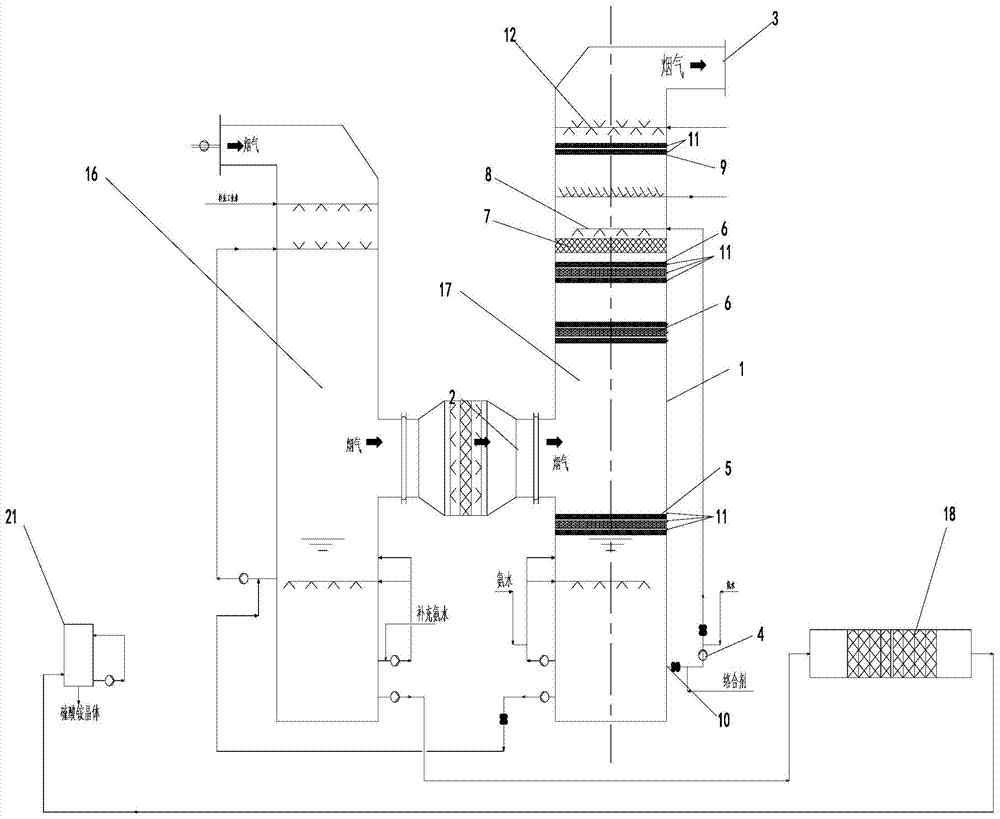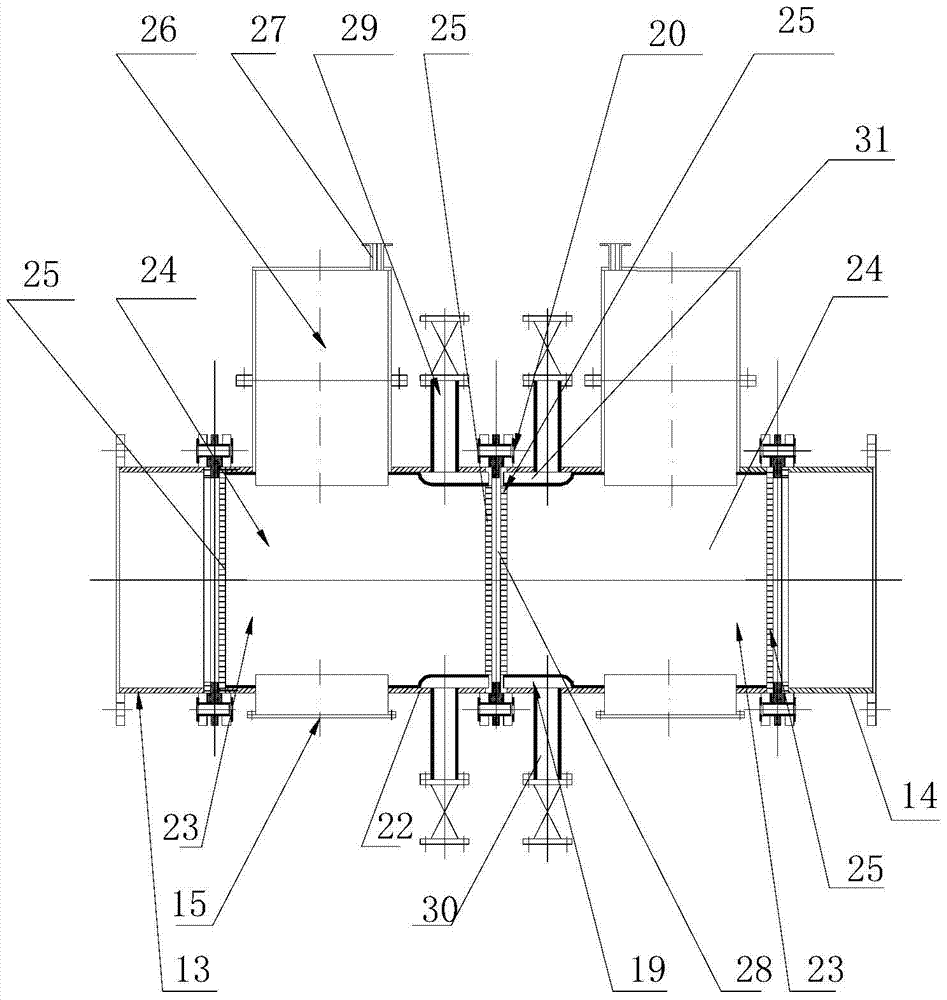A Cooperative Removal Process of Flue Gas Pollutants Based on Electrolysis
A pollutant and flue gas technology, applied in gas treatment, air quality improvement, combined devices, etc., can solve the problems of wasting power consumption, reducing reaction conversion rate, aggravating impeller wear, etc., to simplify structure, improve conversion rate, reduce The effect of energy consumption
- Summary
- Abstract
- Description
- Claims
- Application Information
AI Technical Summary
Problems solved by technology
Method used
Image
Examples
Embodiment Construction
[0057] see figure 2 , the structure of the absorption tower is:
[0058] The synchronous desulfurization and denitrification reaction tower of the present invention comprises a tower body 1, the top of the tower body is provided with a flue gas outlet 3, the middle part is provided with a flue gas inlet 2, and the bottom of the tower body 1 is provided with a circulating absorption liquid outlet 10, and the circulating absorption liquid outlet 10 The circulation pump 4 communicates with the spray layer 8 on the upper part of the tower body, the tower body above the spray layer 8 is provided with an electrostatic demisting and reaction layer 9, and the electrostatic demisting and reaction layer 9 is provided with a washing layer; A packing layer 7 is arranged in the tower below the spray layer 8, and at least one layer of absorption and electrochemical reaction layer 6 is arranged below the packing layer 7 (two layers in this embodiment, and two adjacent layers of absorption a...
PUM
| Property | Measurement | Unit |
|---|---|---|
| thickness | aaaaa | aaaaa |
| thickness | aaaaa | aaaaa |
| width | aaaaa | aaaaa |
Abstract
Description
Claims
Application Information
 Login to View More
Login to View More - R&D
- Intellectual Property
- Life Sciences
- Materials
- Tech Scout
- Unparalleled Data Quality
- Higher Quality Content
- 60% Fewer Hallucinations
Browse by: Latest US Patents, China's latest patents, Technical Efficacy Thesaurus, Application Domain, Technology Topic, Popular Technical Reports.
© 2025 PatSnap. All rights reserved.Legal|Privacy policy|Modern Slavery Act Transparency Statement|Sitemap|About US| Contact US: help@patsnap.com



